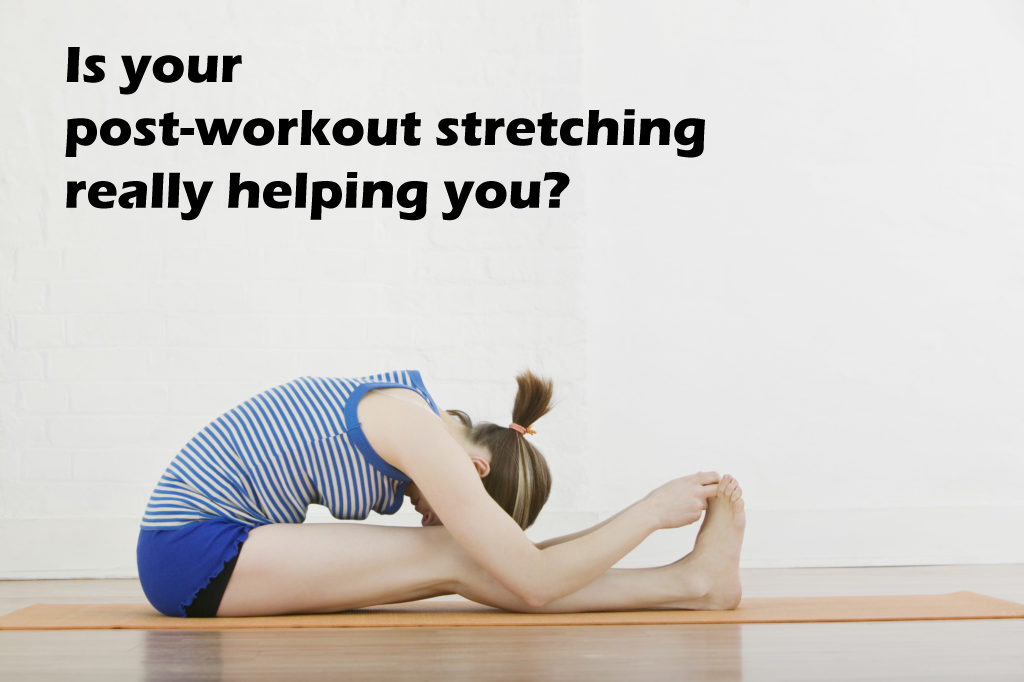Is your post-workout stretching really helping you?

Advice about stretching is a bit like advice about nutrition: Confusing at the best of times, usually contradictory, and anything but consistent!
“Should I stretch before the workout? After the workout? Both?”
“How long should I hold a stretch? Should I stretch every day?”
“Is there such a thing as too much stretching?”
“Does stretching even work anyway? I have been stretching for years and still can’t touch my toes!”
Different coaches will give you very different answers to the above questions…
There are some who say stretching is necessary to help avoid injuries.
(But, of course, even if you stretch, if the load placed on a part of your body is greater than the capacity of that muscle or joint, an injury is likely the result).
The argument here is that if you’re able to improve your range of motion of a particular joint, then you’ll be able to tolerate more load on that joint, hence decreasing your chance of injury.
This brings me to the other most common reason to stretch: It makes you more flexible.
When we consider gymnasts and yogis, who are both known to stretch a lot and be very flexible, it seems obvious that stretching helps you improve your range of motion.
But, there’s a whole other school of thought that questions whether this is true. In fact, they question whether static stretching is useful at all.
One of these skeptics is strength and conditioning coach Charlie Reid.
In this blog, he talks about the reasons people tend to think they need to stretch:
- They feel tight
- They want to avoid injury
- They want to become more flexible
To the tightness argument, he says “Tightness may be less about the structural limitation and more about your perception.”
He says that while stretching might help in the short term, it’s not a long-term solution to making you less tight.
As for the avoiding injury argument, he denies it and offers better solutions to avoid injuries, such as honing in your movement mechanics and selecting proper progressions that reflect your fitness level.
Finally, as for the obvious stretching making you more flexible, he says it doesn’t.
Or at least, not in a useful way. He does, however, acknowledge the ‘stretch tolerance’ concept.
The stretch tolerance principle says that the only way stretching makes you more flexible is by convincing your nervous system to become OK with a certain range of motions.
Your nervous system is designed to protect you, so if it feels threatened by a certain range of motion it will stop you from going there.
So the idea here is that the more you stretch, the more your nervous systems start to say to your body, “You’re good.
You’re not under serious threat,” which then allows you to gain a little more range of motion.
But Reid says that even if your nervous system does start to chill out and give you a little more range of motion as you static stretch, that this new range of motion doesn’t translate into active movements you do at the gym or in life.
In other words, you might be able to go a little deeper into the splits, but it ends there.
It’s just flexibility for the sake of flexibility, as opposed to helping you in any practical way.
Check out this infographic below for more about what he has to say:

So where does this leave us?
Again, it’s a bit like a diet.
There really is no one-size fits all approach. Often trial and error and using your body as a Guinea pig is the best approach.
If you feel like doing a couch stretch after a workout helps you, then do it!
And even if static stretching after a workout isn’t doing what you hoped it did, there’s another reason to stretch: It can be relaxing and sometimes it just feels good.





